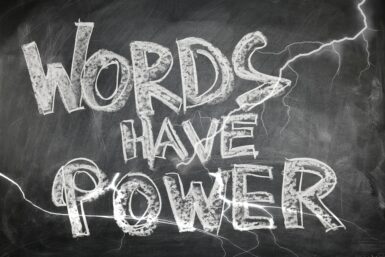Thinking of attending an editing conference this year? Here’s our snapshot of the conferences in 2024.
Superlatives in the age of GOAT

As a writer and editor—and a former gymnast who competed internationally in the 1970s—I’m fascinated by the language that is used to describe what gymnasts do. Well, to be honest, having left the sport completely when I retired in 1978 and paid it little or no attention for decades, I’m fascinated by the language attached to two gymnasts in particular, both of whom captured the world’s attention and changed the sport forever.
In July 1976, at the Montreal Olympics, 14-year-old Romanian sprite Nadia Comăneci scored the first perfect 10 in gymnastics history. Those of us who were involved in the sport at the time knew that it was almost inevitable, since the judges had awarded scores of 9.9 to other gymnasts who came nowhere close to Comăneci’s form and amplitude. The electronic scoreboard designers had been told that a score of 10.00 was impossible and accordingly had provided only one digit to the left of the decimal; when the historic moment came, what flashed on the screen was “1.00.” There was a long moment of hushed confusion, including for Comăneci herself—and then pandemonium.
As Comăneci went on to rack up six more perfect scores in Montreal, as well as three gold medals, a silver, and a bronze, the word of the moment was, simply, perfect. A handful of other gymnasts would score perfect 10s, both in Montreal and in the years afterward. But perfect has remained firmly attached to Comăneci, whose young age, prepubescent body, and clean, daring style of gymnastics also revolutionized the sport.
In 2006, the judging system changed. Scores are now determined by two separate panels of judges, one awarding points for difficulty and the other deducting marks for errors in execution. Since the sky’s the limit in terms of difficulty, scores are open-ended and there’s arguably no longer any such thing as perfect.
Fast-forward to the 2016 Olympic Games in Rio de Janeiro, when journalists were already running out of adjectives to describe the American phenom, Simone Biles. Powerful, unstoppable, untouchable, unbeatable, in a league of her own, fearless, gravity-defying, and so on. Even otherworldly.
Five years later, coming into the 2020 Tokyo Olympic Games (taking place in 2021), Biles had some new descriptors: Most decorated gymnast in history. A legend in her own time. Icon. Superhuman. She was approaching the status of American swimmer Michael Phelps, who holds a number of all-time records, including for Olympic gold medals (23), and is widely considered to be one of the greatest athletes of all time.
Biles had cheekily adopted the acronym GOAT (Greatest Of All Time) to “hit back at the ‘haters’,” with a goat embroidered in crystals on her leotards and even her own goat emoji attached to her hashtag on Twitter. She already had no fewer than four gymnastics elements officially named after her—one on vault, one on balance beam, and two on floor exercise—and if she landed the outrageously dangerous Yurchenko double pike vault in Tokyo she’d have a fifth.
***
I started writing this post before the Olympic gymnastics competition began in Tokyo. As we now know, the anticipated narrative didn’t play out. Although Biles landed the double Yurchenko in pre-Olympic training and made it through the qualifying round—with a few uncharacteristic slips—something happened in her first vault of the team finals. She took herself out of the competition, citing the need to take care of her mental health.
Over the next few days, as Biles opted not to compete in the all-around finals and then three of the four event finals, it became clear that this was more than just a case of Olympic-sized nerves. Slow-motion video of her single vault in the team competition revealed that she had become disoriented in the air. With the high-risk nature of Biles’s routines on all four gymnastics events, disorientation is not only terrifying but potentially life threatening. Gymnasts, trampolinists, and divers call it the twisties, and it’s no joke. Other sports and activities have similar conditions; for example, archers get target panic, golfers and others get the yips, and of course writers get writer’s block. (I’m not sure what editors get, but I’m sure there’s something!) Whatever you call it, it’s linked with stress but has a physiological and neurological basis.
Biles competed in the balance beam final, with a modified dismount that included no twists. She won a bronze medal, an incredible feat. (Canadian Ellie Black was right behind her in fourth, also an incredible feat after respraining her ankle only a few days before.) More importantly, after all the other superlatives that have been used to describe her, she has earned a new and even better one: human.
In the blinding glare of the world’s expectations, Biles calmly put her mental and physical well-being ahead of the superlatives, the medal count, and our collective adulation and media-driven thirst for superhuman performance. Like tennis star Naomi Osaka did a few months before, she gave athletes permission to show their vulnerability and to say, “Enough.” She gave the vast machine that is the Olympic Games, including all the corporations that make millions off the backs of athletes, an opportunity to see, if only for one brief moment, what it does to them.
Suddenly, good words like wise, grounded, gracious, courageous, and resilient were being used—words that describe those human, not superhuman, qualities we can all aspire to. And for that the world owes Simone Biles a great deal more than if she had thrilled us with the story we expected.
This Post Has 6 Comments
Comments are closed.




Such an insightful and informative post, Merrie-Ellen. Thanks for sharing your unique perspective on this important subject.
Thanks so much, Georgina. I’m glad you enjoyed reading it!
What an excellent summary of Simone Biles’s story, such an important one to come out of this Olympics. I liked the way you gave us the decades-long gymnastics context as well as mentioning other athletes who have brought the mental health of elite athletes to the fore.
Thank you, Nancy! We all have so much to learn from this story.
I am a sports enthusiast, but this is the first thing I’ve read that gives me an appreciation of gymnastics, and your insider’s perspective is bonus. Really well done!
Thanks so much, Tom. I’m really glad you enjoyed it!